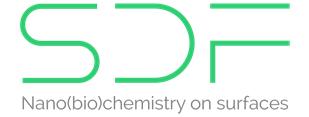
Scanning probe microscopy (SPM) remains a central tool to gain atomistic details of molecular surface assemblies. For weakly adsorbed species, the formation of a 2D monolayer is mostly driven by intermolecular lateral interactions. SPM can reveal such subtle features to facilitate the engineering of 2D crystal with designed functional properties.
Scope:
The main scope of this symposium is about gathering the international community involved into the development and advancement of an atomic scale description of molecular assemblies through scanning probe microscopy (SPM) techniques. SPM are mostly used to describe structural properties of assemblies, but they are also used to probe more specific properties and to support strategies for building 2D molecular systems with new functionalities. The property description with SPM may go from the simple structural imaging of a molecular island on a surface to a more accurate determination of the intermolecular energy within the units of this island, and possibly its growth mechanism. The emergence of SPM techniques that are coupled to a spectroscopic (FTIR, Raman, XPS, etc.) probe may reveal additional information related to electronic, electrical, magnetic or vibrational properties of assemblies at the atomic scale. The improving knowledge and understanding of intermolecular interactions obtained from SPM also contribute directly to the strategy for creating more specific molecular building blocks, for designing and producing well defined assemblies, and for predicting the influence of new functionalities of modified molecular building blocks. This symposium will strongly encourage the presentation of experimental and theoretical works that explore and contribute to extent the limits of SPM techniques.
Hot topics to be covered by the symposium:
- New approaches in SPM
- Supramolecular 2D frameworks
- Multilayer architecture
- Molecular surface pattern origami
- SPM in nanometrology
- High speed high resolution imaging
- Atomic and molecular manipulation
- Dual SPM-spectroscopy techniques.
Please visit the E-MRS website for more information!
To enable comments sign up for a Disqus account and enter your Disqus shortname in the Articulate node settings.


